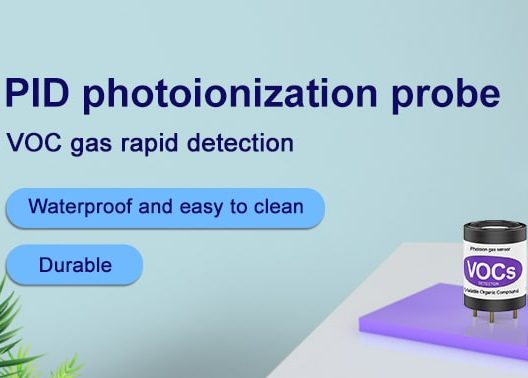PID stands for “Photo-Ionisation Detector”. PID (Photoionisation Detection) sensors are essential tools for monitoring air quality and can be incorporated into a hand-held, personal, or fixed detector for the detection of volatile organic compounds (VOCs) and some inorganic compounds.

PID sensors can detect VOCs down to parts-per-billion (ppb) and up to thousands of parts-per-million (ppm). In this article ‘Everything you need to know about PID Sensors’, we’ll answer some frequently asked questions about PID sensors to help you better understand their applications, advantages, and importance across various industries.
What is a PID Sensor?
A PID sensor is a device measure volatile organic compounds (VOCs) to very low concentrations and other gases in the air. It relies on a process called photoionisation to detect and quantify these substances.
How Does a PID Sensor Work?
A PID (Photoionization Detector) sensor is a type of gas sensor that operates based on the principle of photoionization. Here’s how a PID sensor works:
Photoionization: When a gas sample enters the PID sensor, it encounters an ultraviolet (UV) lamp within the sensor. The UV lamp emits high-energy photons, which have enough energy to ionize gas molecules in the sample.
Ionization of Gas Molecules: When the high-energy photons from the UV lamp interact with the gas molecules in the sample, they can cause the gas molecules to lose an electron, resulting in the formation of positively charged gas ions.
Generation of Current: The positively charged gas ions produced by the ionization process are then attracted to a negatively charged electrode within the PID sensor. As the ions move towards the electrode, they generate a small electric current, which is proportional to the concentration of the target gas in the sample.
Measurement of Current: The electric current generated by the movement of ions is measured and converted into a gas concentration reading by the PID sensor’s electronics. This reading provides a real-time indication of the level of the target gas present in the sample.
Key Features of PID Sensors:
Wide Detection Range: PID sensors are capable of detecting a wide range of volatile organic compounds (VOCs) and other gases with ionization potentials lower than the energy of the UV photons emitted by the lamp.
Real-time Monitoring: PID sensors provide real-time measurements of gas concentrations, allowing for immediate detection of hazardous or volatile gases in the environment.
Portable and Fixed Systems: PID sensors are use in both portable, handheld devices and fixed monitoring systems, making them versatile for various applications, including industrial safety, environmental.
Selectivity: PID sensors can be selective for specific types of gases based on their ionization potentials, allowing for the detection of targeted compounds in complex gas mixtures.
Where Are PID Sensors Used?
PID sensors are used in a variety of industries, including environmental monitoring, industrial safety, hazardous material response, indoor air quality assessments and ambient outdoor air quality.
What Are the Key Advantages of PID Sensors?
PID sensors offer fast and accurate measurements, real-time monitoring, and the ability to detect a wide range of VOCs. They are also portable and easy to use, making them versatile tools for many applications.
What Types of VOCs Can PID Sensors Detect?
PID sensors can detect a broad spectrum of VOCs, including solvents, fuels, pesticides, and other organic compounds.

Are PID Sensors Safe to Use?
Yes, PID sensors are safe to use when operated according to manufacturer instructions. They are designed to be non-destructive and non-invasive.
How to Calibrate a PID Sensor?
Calibrating a PID sensor involves exposing it to a known concentration of a specific VOC and recording the mV response for that known concentration. This is often done at the zero point, at the midpoint. . Regular calibration ensures accurate readings.







